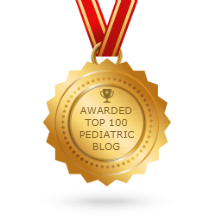“Out, damn’d snot! out, I say!—One; two: why, then ’tis time to do’t.—Hell is murky.—Fie, my lord, fie, a soldier, and afeard? What need we fear who knows it, when none can call our pow’r to accompt?—Yet who would have thought the child to have had so much snot in him?”
Macbeth Act 5, scene 1, 26–40. Adapted.
One of the joys of being a pediatrician is that I can still make jokes about snot. I get all serious sometimes during the physical exam, asking a six year old to turn up their nose for a careful look. Then I make a concerned “Hmmmmm noise”—you know, create some comedic tension—then, a pause, followed by one of my best one-liners: “Ewww! Boogers!”
It cracks them up. Really.
Shannon asked me to write about whether the fancy-pants new high-tech nasal aspirators are any better than the old fashioned ones at de-snotting kids. The truth is, I have no idea. But there are plenty of other booger-tidbits I’d be happy to share—so join me for what promises to be the most revolting post of 2009, a journey of mucus and fun!
Snot is nasal mucus, made by specialized cells lining the nose, sinuses, and the entire respiratory tree. It’s mostly water, plus specialized proteins called mucins that help create its wonderfully sticky character. Mucus also contains disease-fighting antibodies and chemicals that can tear apart infectious particles. Not only does it help prevent and treat infections, but it also keeps the nasal linings happy and moist, and humidifies inhaled air. Its sticky surface traps pollens, infectious particles, and airborne pollutants, sort of like built-in fly paper. Under ordinary circumstances, a person makes—and swallows– about a quart of it a day.
The most common “chief complaint” for visits to a pediatric office is nasal congestion, most often caused by an upper respiratory infection, or “the common cold.” The snot, especially early on in the cold when it’s clear and watery, is loaded with infectious viral particles. That’s why colds are so common: they make your nose runny and irritated, so you rub it, then touch a doorknob, and then the virus can easily spread to the rest of the family and everyone else in the classroom. Towards the end of a cold, snot will get thick and dark and lovely yellow-green (especially the stuff in that first morning tissue.) By then, the mucus isn’t infectious anymore. Rather than being loaded with virus, it’s filled with dead and dying infection-fighting cells and sloughed debris from your nose. It’s a misconception (unfortunately perpetuated by many doctors, I know) that green snot at the end of a cold means that there’s some kind of infection that needs antibiotics. ‘Taint true, though if thick persistent all-day mucus lasts longer than 10-14 days at the end of a cold, you might have a sinus infection brewing. It’s the duration of symptoms that helps distinguish a cold from sinusitis, not the color of the boogers. And no, you don’t need to bring in a sample for your pediatrician to examine. Really. Thanks.
Excessive snot could be caused by other things. Allergies can make your nose run, though more commonly allergies cause swelling of the lining of the nose, causing a congested feeling without much actual extra mucus. When you cry or have irritated, teary eyes, the tears drain into your nose through little ducts, which makes your nose run too. And a three year old who shoves a lego up her nose is going to get one heck of a snotty discharge in a few days. About once a year I see a toddler with a “cold”—but a cold that oddly enough only leads to nasal discharge from one nostril. If your child has two nostrils, but only one of them is runny, take a look up there. You might just find a toy you thought was missing.
Too much snot causes a few problems. In the short-run, it might make it hard for your child to get comfortable, and can interfere with sleep. More importantly, nasal mucus that just sits there in the nasal cavity is a warm and inviting media for bacteria, and can eventually lead to secondary bacterial infections like ear infections and sinusitis. So both for symptom relief and for the prevention of these infections, it’s a good idea to at least try to get the boogers out of there.
What about cold medicines? The short answer: they don’t work. Some contain antihistamines that may make your child sleepy—that’s not a bad thing, as long as it’s safe—but none actually decrease mucus accumulation . Topical decongestants like Afrin do work, but are potentially addictive and shouldn’t routinely be used in children.
So a more creative approach is needed. Traditional, effective advice includes giving the child extra fluids, humidifying the air, and sitting in a steamy bathroom. These will all keep the mucus nice and runny rather than thick and sticky. You can also put a few drops of saline solution in the nostrils, or even better use a nasal saline irrigator to wash out the boogies. Loose, watery mucus can also be sucked out with a traditional bulb aspirator.
You say you want something fancy, something high-tech, something to casually whip out to the oooohs and aaaaahs of the envious playgroup crowd? This electronic marvel boasts twelve different tunes it can play to distract your honey while her nose is sucked out. (Got to be at least 12. Junior would certainly complain if the same tedious song were played during each episode of nose-sucking. I’m surprised there isn’t a built-in MP3 player.) Or the Nosefrida, manufactured in Sweden, which apparently lets you inflate your baby’s head much like a carnival balloon. I can’t believe I’m raising three kids without it!
I have no experience with these newer nose-suckers, so please, if you get one, post a review. Anyone who posts gets double points if you include a photo—of the kid, not the snot. I really can live without seeing that!














Recent Comments